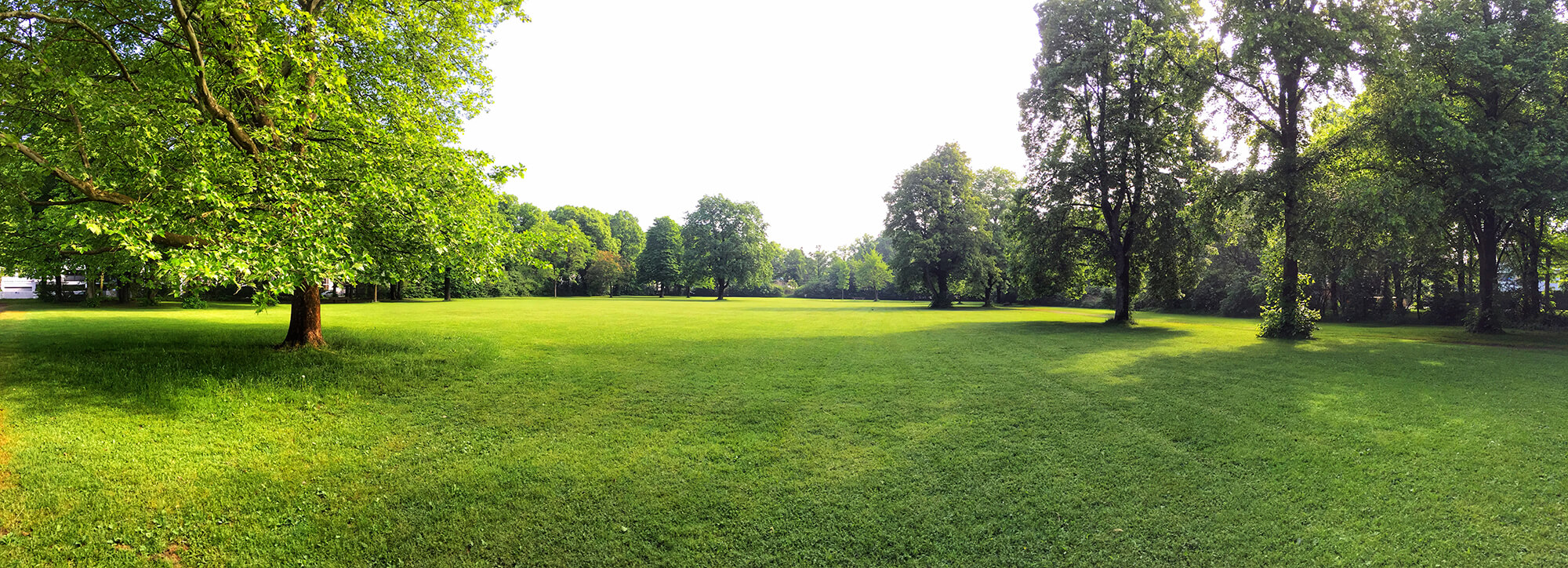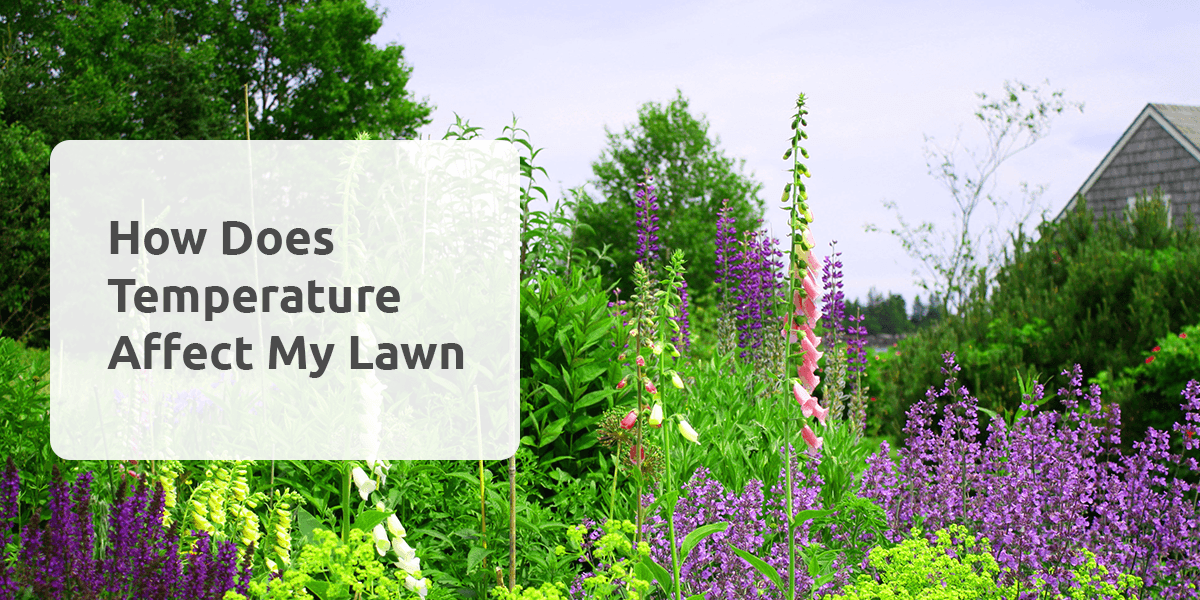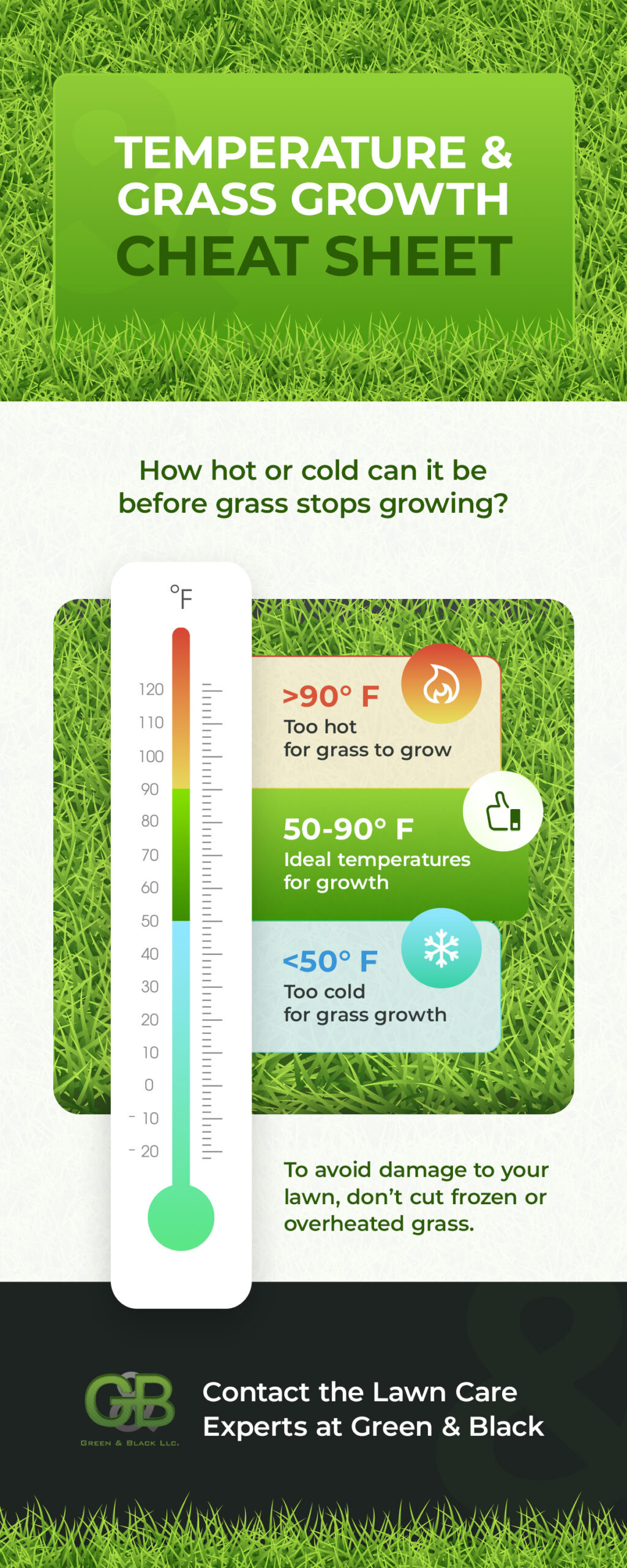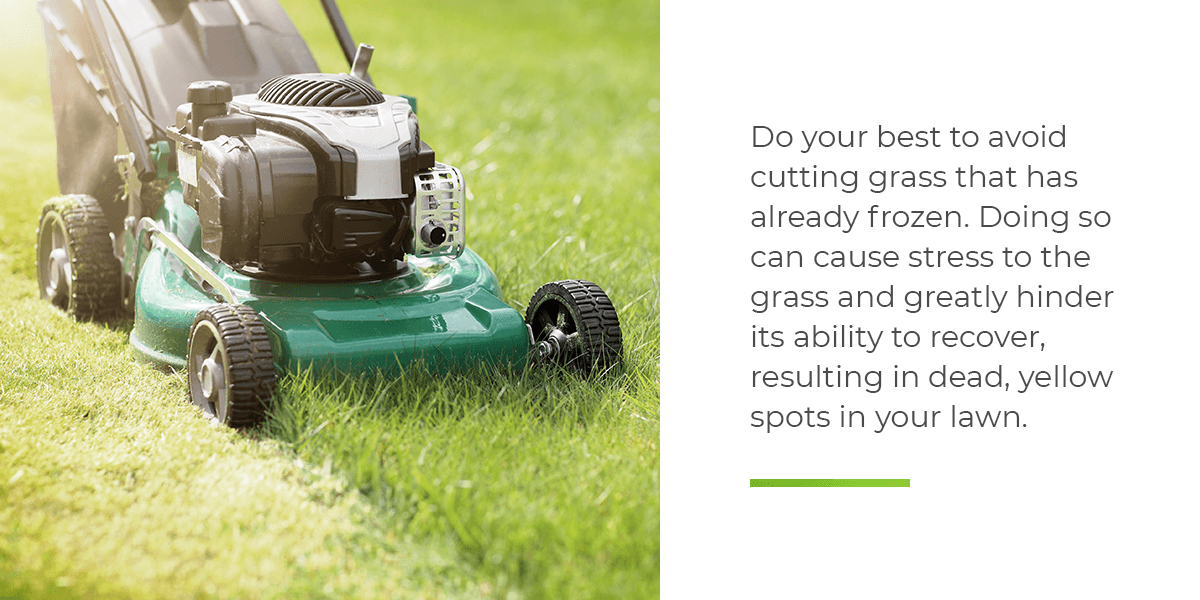Jump to:
- When Does Grass Stop Growing
- What Temperatures Cause Grass To Stop Growing
- How To Prepare Your Lawn For Colder Temperatures
- How To Care For Grass When It Starts Growing
- The Benefits of Professional Lawn Care
- Contact Green & Black
Wouldn’t it be great if our lawns could stay lush and green all year long? While this would be a dream come true for many people, the reality is that grass must grow — or not — with the changing seasons. Depending on the average temperatures where you live, your lawn may grow differently.
Find out how your grass may be impacted based on changes in temperature with this helpful guide.
When Does Grass Stop Growing?
Grass requires a lot of elements to grow healthily and normally, including just the right amount of heat, light, water, and nutrients. When grass doesn’t get enough of these key components, it goes into dormancy as a form of protection. When there is not enough sunlight, too little water, or extreme temperatures, grass will stop growing until conditions allow growth to be more viable.
As seasons change, resources such as sunlight and ideal temperatures cause growth patterns in the grass to change, too. Grass grows particularly fast during late spring and early summer in response to adequate amounts of water and sunlight and warmer temperatures. In the middle of Summer, grass will have less growth due to the excessive heat but as fall begins you’ll see it begin to grow again. Then, in late fall and through all of the winter grass stays dormant as the key components needed for continuous growth become less scarce.
This goes to say that anytime grass is met with extreme changes in temperature, such as heatwaves and freezing temperatures, dormancy will begin to take place.
What Temperatures Cause Grass to Stop Growing?
Healthy lawns will stay dormant during summer droughts and the cold temperatures of winter. How hot or cold can it be before grass stops growing in Minnesota and other states?
Grass generally stops growing once temperatures drop to below the range of 50-55 degrees Fahrenheit or reach above 90 degrees Fahrenheit. Since soil takes longer than air to lose and retain heat, it will take a period of a least a few days for a temperature change to impact the growth of grass. Consistently warmer or cooler temperatures send signals to the root system of the grass that it is time to become dormant.
How to Prepare Your Lawn for Colder Temperatures
It’s a good idea to make a plan to mow your lawn a few times before the first frost of the season. In general, you should cut your grass after it has become dormant but before the frost. Ideally, the height of your grass should be between 2 1/2 and 3 inches in height by the time cold weather hits. Fertilizing your grass one last time before hard frosts set in can also make a big difference in the condition of your lawn, allowing the grass to get an extra boost of nutrients while it stays dormant for the winter season.
Do your best to avoid cutting grass that has already frozen. Doing so can cause stress to the grass and greatly hinder its ability to recover, resulting in dead, yellow spots in your lawn. It’s helpful to pay attention to your grass and its growth patterns. Once you’ve noticed the grass has noticeably stopped growing, you may want to consider stopping mowing until it “wakes” from the dormant state.
As you prepare your lawn for the upcoming winter months, our expert services at Green & Black can help. From lawn mowing to fertilizing, we can help you feel confident that your lawn will come back from its dormant state as healthy as ever.
How to Care for Grass When It Starts Growing
Once warm weather arrives, it may not be easy to determine if your lawn is dead or if it is still dormant. If your entire lawn appears to be the same brown color, the chances of it being dormant are high. However, if there are some areas in which the grass has become green while others have remained brown, those spots could indicate where the grass has died.
Proper care can help bring grass out of dormancy if it is ready. You can take certain steps, such as:
- Maintaining a good watering schedule
- Avoiding an excessive amount of fertilizer
- Controlling weeds
- Reducing the amount of traffic on the grass to help eliminate stress
Once your grass has come out of its dormant state, you may be wondering when you should start cutting it again. Generally speaking, if it is below 50 degrees Fahrenheit, it is still considered to be too cold to mow your lawn. The ideal temperatures to mow are between 50 to 80 degrees Fahrenheit.
Does grass stop growing at a certain height? Once temperatures have become consistently warmer, it is a good idea to follow the one-third rule, which means to never clip off more than one-third of the grass’ current height in one mowing session. That’s because the height at which you mow grass determines the stimulation of grass growth and density. Cutting too much of your grass in one mow can inhibit healthy growth and cause damage.
The Benefits of Professional Lawn Care
We understand the sense of pride homeowners feel when their lawn is in excellent condition. That’s why trusting in the experts at Green & Black provides many benefits, such as:
- Stronger, healthier grass that bounces back from inclement weather
- Greener, thicker grass that adds to your property’s curb appeal
- Reduced number of pests due to keeping weeds under control and the grass consistently mowed
Contact the Lawn Care Experts at Green & Black
For many years, the professional staff at Green & Black have been dedicated to providing customers with superior lawn care services. Our mission is to help you create and maintain a gorgeous property that makes you proud. Our team is knowledgeable, friendly, and reliable, so you can feel confident in a job well done each and every time.
At Green & Black, we offer quality lawn care services to Minnesota commercial properties and residents, including but not limited to:
No matter the size of your commercial or residential property, we’re ready to make it look its best. Contact us today to get a free quote for better care for your lawn.





